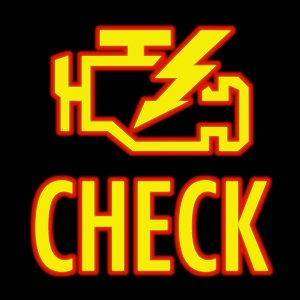Drivers, check your engine lights.
That annoying red or yellow glow may mean something actually is wrong with your vehicle.
Exactly what it means, though, depends a lot on the brand of vehicle that you drive, based on data collected by CarMD for its 2015 Vehicle Health Index.
“Different vehicle makes tend to have a unique set of problems and common failures,” said CarMD’s annual report. “The No. 1 most common repair on vehicles in the U.S. is ‘replace O2 sensor,’ accounting for 7.1 percent of all ‘check engine’-related repairs last year [2014].”
 The CarMD index points out common check engine-light-related problems and repairs by brand, “providing a helpful resource for owners as they maintain and repair their vehicles.”
The CarMD index points out common check engine-light-related problems and repairs by brand, “providing a helpful resource for owners as they maintain and repair their vehicles.”
RELATED: How healthy is your vehicle? Here’s what the doctor says
Those O2 sensors, for example, measure the amount of unburned oxygen in a vehicle’s exhaust and tell its computer when there is too much or not enough for ideal operation, according to CarMD. If a faulty O2 sensor is not repaired, “a vehicle’s gas mileage can drop by as much as 40 percent.”
The index reports on the five most common check-engine-light repairs for 30 automakers, along with labor and parts costs, total repair cost and percent of each manufacturer’s vehicles with the problem.
In the case of Hyundai, which scored the lowest overall brand rating – i.e., highest ranking – in the study, the five most-common repairs and percentage of that manufacturer’s vehicles requiring the repair are:
- Inspect for loose fuel cap and tighten or replace as necessary, 12.66 percent.
- Replace oxygen sensor(s), 10.6 percent.
- Replace catalytic converter(s) with new converters, 6.89 percent.
- Replace spark plug wires and spark plugs, 6.2 percent
- Replace evaporative emissions purge control valve, 6.1 percent.
The highest No. 1 repair rate was 23.3 percent of Lincolns requiring replacement of ignition coils and spark plugs and the lowest was 6.63 of GMC vehicles requiring replacement of oxygen sensors.
The most expensive No. 1 repair was $1,300.91 to replace catalytic converters on 7.75 percent of Cadillacs, followed by $1,275.50 to replace the same equipment on 11.4 percent of Toyota’s vehicles.
The least expensive No. 1 repairs were $0 for Hyundai (12.66 percent), $1.22 for Mercedes (10.21 percent), $3.47 for Jeep (10.48 percent), $4.52 for Dodge (13.88 percent) and $5.87 for Chrysler (7.85 percent) to inspect for a loose fuel cap and tighten or replace as necessary.
For details on all 30 manufacturers, see the CarMD Vehicle Health Index report, starting on page 14.
Then wonder and worry a bit less about that check-engine light.


